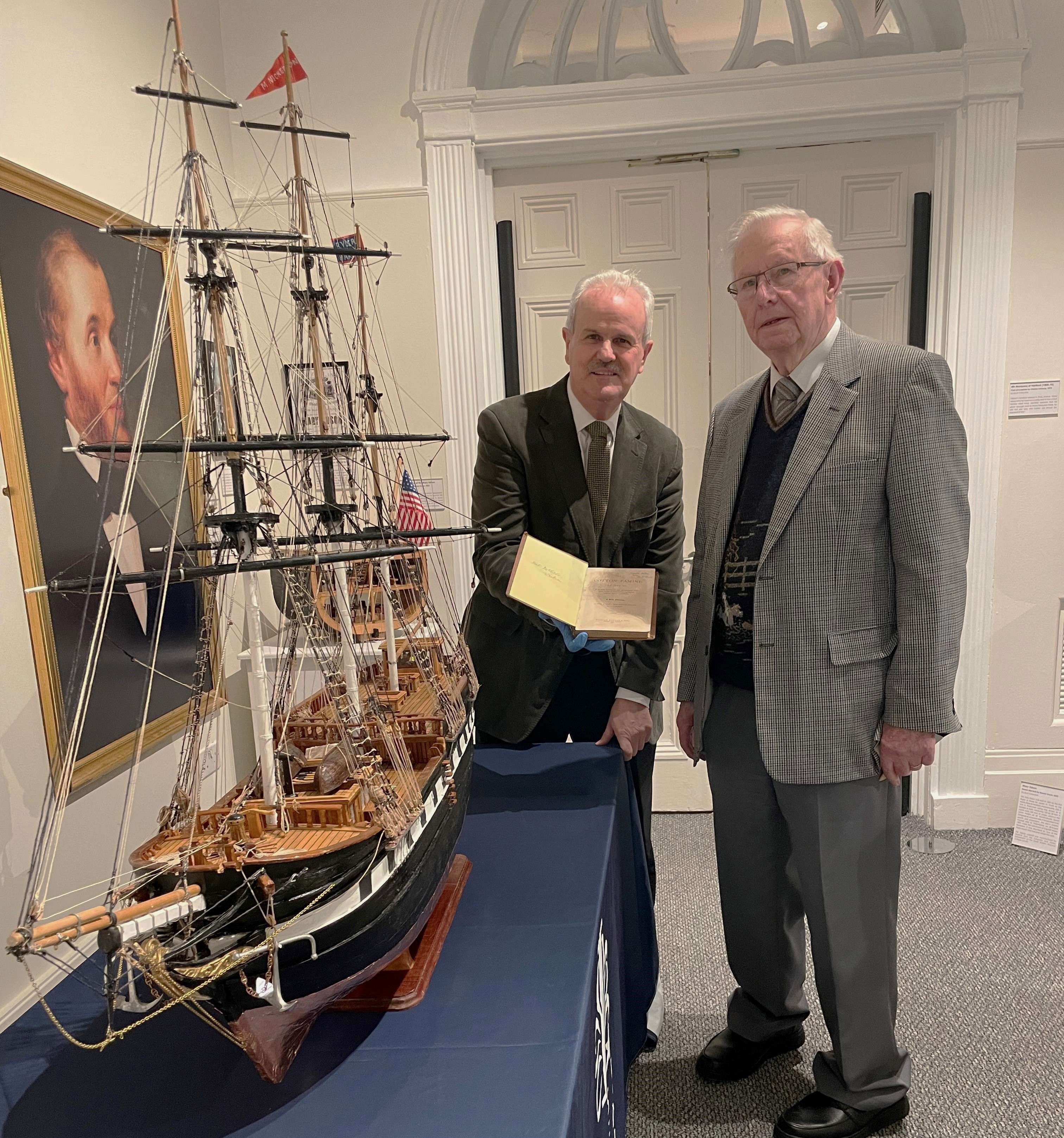A new exhibition exploring the tragic history of Lisburn’s cotton famine (1861-63) has opened at the Irish Linen Centre & Lisburn Museum.
At the heart of the display is a scale model of the Mary Edson, a ship chartered in 1863 by Lisburn-born millionaire, A.T. Stewart. From his home in New York, Stewart sent the ship with provisions to help the weavers of Lisburn who were left destitute by the U.S. Civil War, which cut off their supply of cotton. Over 130 local men, women and children boarded the ship for its return leg, ready to make a new life in America. The majority did not return to Lisburn. The display marks over 160 years since this event, and can be viewed Monday to Saturday 9.30am to 5pm at the museum.
The Mary Edson was built in Medford, Massachusetts, in 1859. It was a three-mast sailing ship known as a bark, measured 122 by 38 feet, and could carry over 360 tons of cargo. The ship’s captain during the cotton famine was Moses Nickerson. His cousin, Thomas, survived a whale attack on the famous American whaling ship the Essex in 1820, a story that inspired Herman Melville’s renowned book, Moby-Dick.
On viewing the model Thomas Beckett, Chair of our Communities and Wellbeing Committee, said: “The cotton famine was such a significant event in Lisburn’s history, and it is important that we mark it. It must have been a vey difficult decision for local cotton weavers to leave their homes and start a new life in America. This wonderful model of the Mary Edson, helps us understand this journey, and the perils the weavers faced.”
He continued, “The museum commissioned this model to help visitors understand, and get a scale of, the cotton famine in Lisburn and the impact it had on local weavers. The Mary Edson is displayed alongside a watch awarded to Moses Nickerson, by the Lisburn Cotton Weavers’ Relief Committee, of an important chapter in the town’s history.”
The unique 1:35 scale model was made by Lisburn-based modeller, Werner Geyer, who has worked with the National Maritime Museum of Ireland and Cavan and Carrickfergus Museums. It was constructed from extensive research gleaned in contemporary and archival sources, as well as plans from the U.S.
On completion of the ship, Werner commented that: “I was delighted to build a scale model of the Mary Edson for the museum’s new exhibition. This is not the first time I have worked with the museum, having made a model of a Lagan barge in 2019. Crafting model ships is a passion of mine, and I am glad that this model of the Mary Edson will be on view for all to enjoy and understand the difficult times of Lisburn’s cotton famine.”
The Mary Edson: from Lisburn to New York, 1863 is on display until Spring 2024. The exhibition also features paintings, prints, letters and objects related to the ship, Stewart and the weavers.
To find out more, go to www.lisburnmuseum.com
